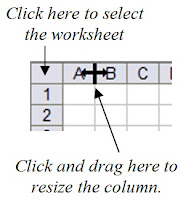Most of us grew up learning math facts the good old
“drill and kill” way, with flash cards. A handy alternative to flash cards is a
standard deck of cards. They help students master their addition and multiplication
facts while taking some of the “kill” out of “drill”.
What’s the advantage to using standard cards?
Randomization.
I don’t know about you, but I breathed a sigh of relief when my least favorite
“fact” was flashed at someone else to solve and then put on the bottom of the
stack. I knew it was gone, at least for a while and I could put off learning 7
X 8 (for example) for a few more minutes. By using a standard deck of cards,
the students (and you) never know what combination will happen next.
Flexibility.
You can control what facts are learned by “stacking the deck”. Do your students
need help with their 5’s, 6’s, 7’s, and 8’s multiplication facts? Fine. Create
a deck with just those numbers. Do they need 9’s facts reinforced? Super. Pull one
card from the deck each time and have students multiply the selected number by
9.
Competition.
Make it a game with rewards and consequences, winners and (dare I say it)
losers.
Wanna try some? Excellent! Here are a few sample
activities. For most of these, the face cards (king, queen, and jack) have been
removed from a standard deck of cards.
Ten Activities and Games
- Draw two cards from the deck and have students either add or multiply the two numbers.
- Draw two cards from a deck. Make a two-digit number and create a factor tree for that number.
- Draw a card from the deck and have students list the first five multiples of that number.
- Deal ten cards to each of four players. Have them group the cards to create as many groups of ten as possible. Students earn one point for each group. Shuffle and deal again. The first player to earn a predetermined number of points wins the game.
- Remove the face cards and tens from a deck of cards. Deal four cards. Have students arrange the cards to make a two-digit plus two-digit addition problem with the largest possible sum. (Version 2: Make the smallest possible sum.)
- Use the same deck as above (no face cards or tens), deal four cards, and have students arrange the cards to make a two-digit minus two-digit subtraction problem with the largest possible difference. (Version 2: Make the smallest possible difference.)
- Students draw one card from a deck. They subtract their card from 100. The next student draws a card. They subtract their card from the previous student’s answer. Example: Player 1 draws an 8, so 100 – 8 = 92. Player 2 draws a 5, so 92 – 5 = 87. As players approach zero, if a player draws a card that cannot be subtracted without going below zero, they pass. The player that draws the card that makes exactly zero when subtracted, wins the game. Example: The current total is 6. A player draws an 8, so they pass. The next player draws a 4, so they subtract 6 -4 = 2. The next player draws a 2, so they win.
- Reverse the above activity. Have students draw cards from the deck and add them. Example: Player one draws a 5. Player two draws a six, so 5 + 6 = 11. Player three will then add their card to eleven. Play continues until a player succeeds in drawing a card that exactly adds up to 100 (similar pass/play strategy as above.)
- Deal five cards to each of four players. Players look at their cards and select the two cards that make the largest sum (or product). All players show their two cards at the same time. The player(s) with the largest sum (product) earns a point. Players draw two more cards to replace the ones played. Play continues until all cards have been drawn and played.
- Separate the cards into two decks. Deck one contains the jacks, kings, and queens. Deck two contains the aces through tens. Players draw one card from deck one. This card determines if they will add (jack), subtract (queen), or multiply (king). They then draw two cards from the other deck and perform the indicated operation.








